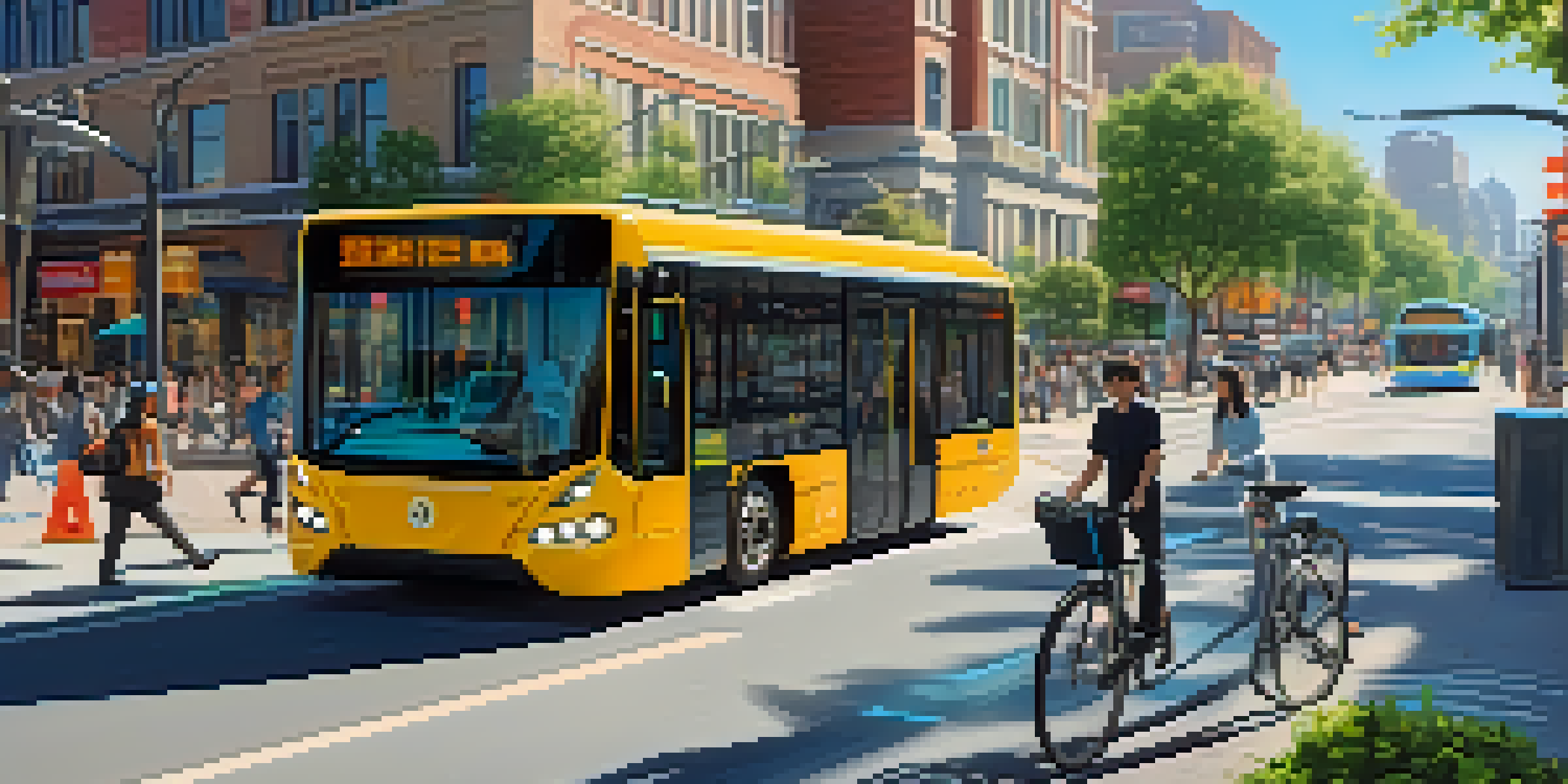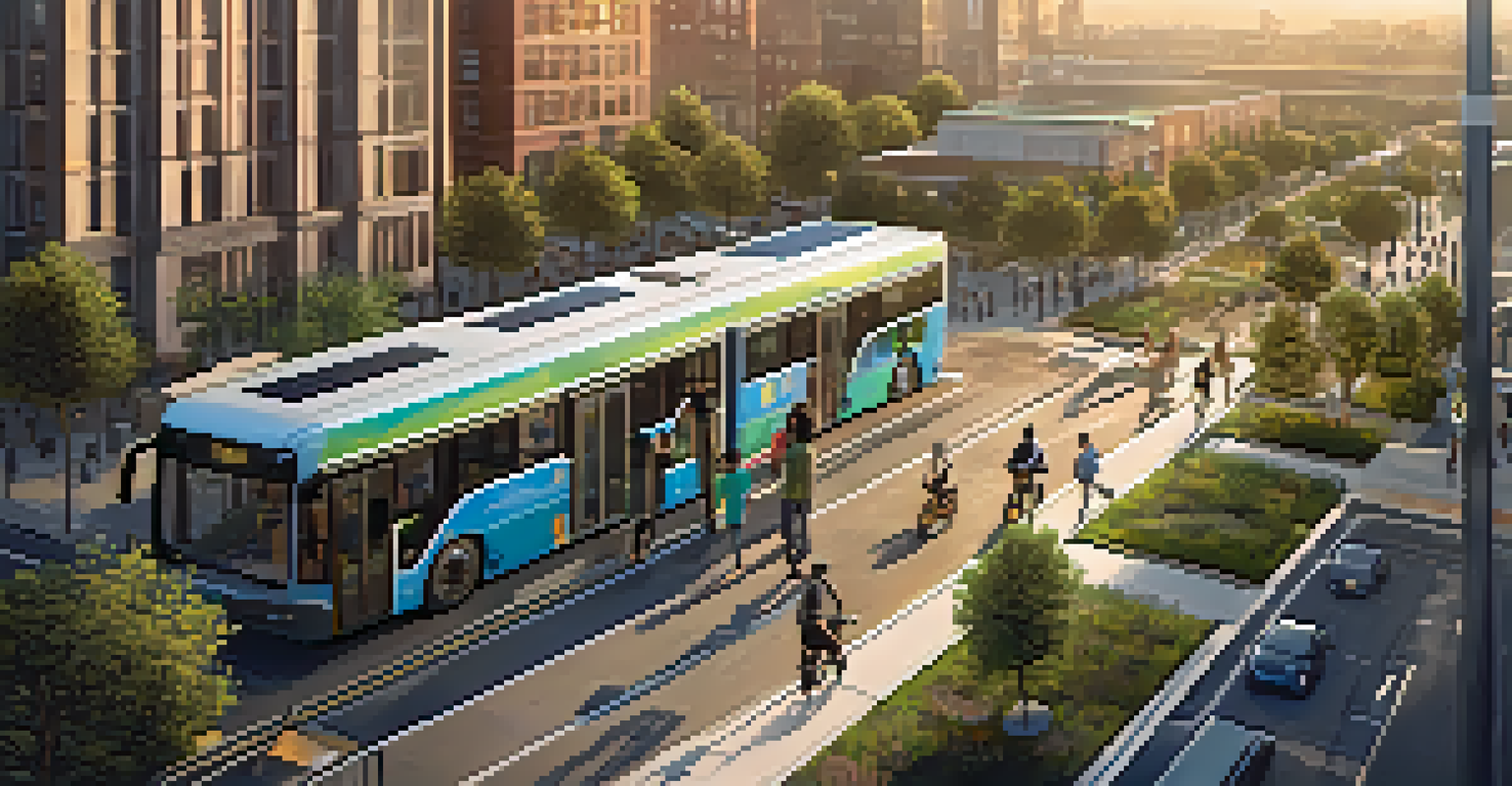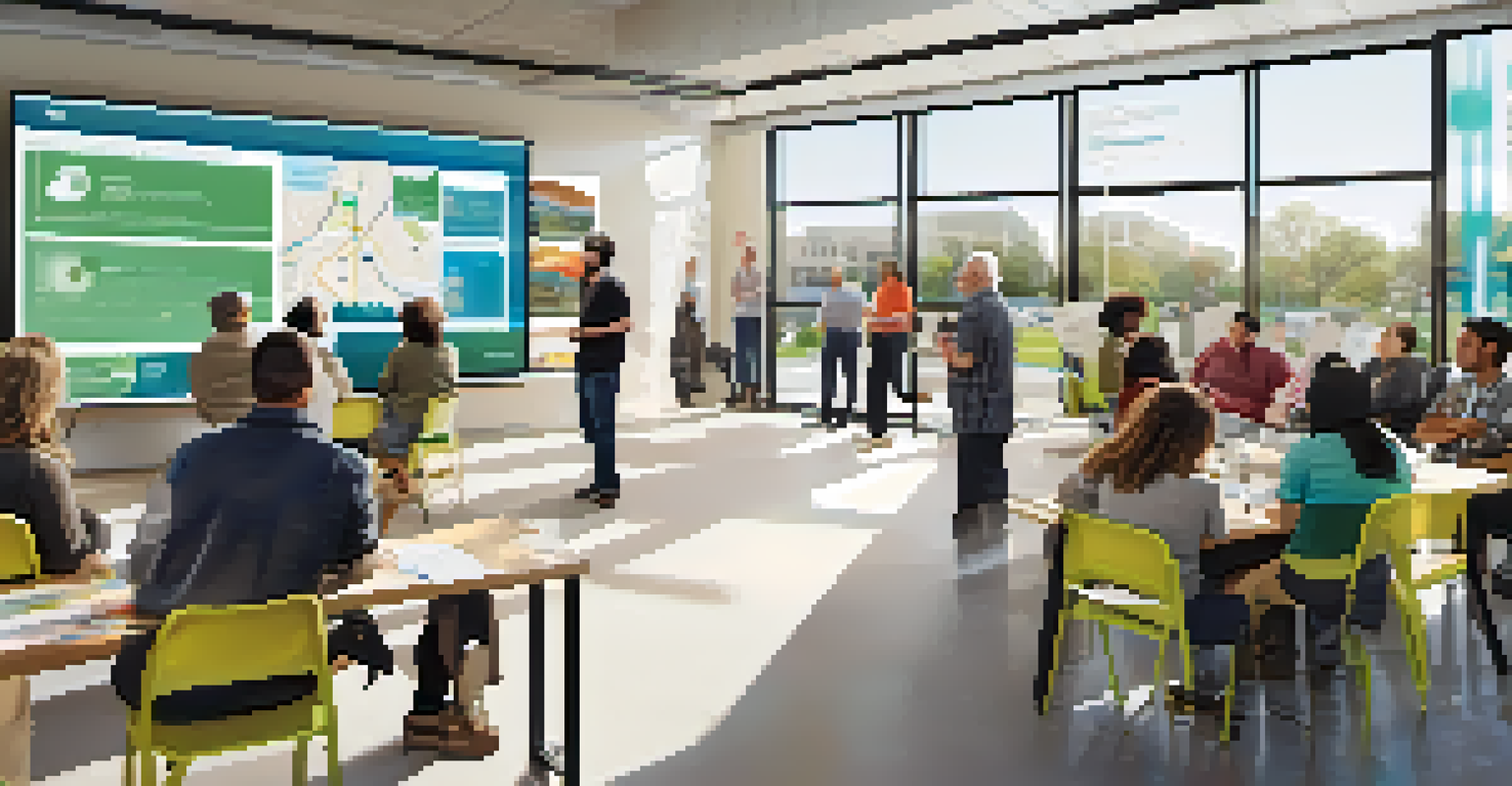Smart City Transportation: Challenges and Opportunities

Understanding Smart City Transportation Systems
Smart city transportation systems leverage technology to improve urban mobility. These systems integrate various modes of transport, such as buses, trains, and bikes, into a seamless experience for users. By utilizing data analytics, cities can optimize routes, reduce congestion, and enhance overall efficiency.
Technology is best when it brings people together.
For instance, cities like Barcelona and Singapore are employing smart traffic lights that adapt to real-time traffic conditions. This not only reduces wait times for drivers but also minimizes emissions by decreasing idle time. Such innovations highlight the potential of smart transportation in creating a more livable urban environment.
Ultimately, understanding these systems is crucial for identifying the challenges and opportunities they present. As cities continue to grow, the need for smart solutions in transportation becomes increasingly important.
Challenges in Implementing Smart Transportation Solutions
Despite the benefits, implementing smart transportation solutions comes with its fair share of challenges. One of the primary hurdles is the need for significant investment in infrastructure and technology. Many cities struggle to allocate the necessary budgets, especially when competing priorities arise.

Additionally, data privacy concerns can deter citizens from fully embracing smart technologies. People are often wary of how their data is collected, stored, and used by city planners and tech companies. This skepticism can hinder the adoption of new systems that rely heavily on user data.
Smart Transport Enhances Urban Mobility
Smart city transportation systems leverage technology to create a seamless travel experience, optimizing routes and reducing congestion.
Lastly, the integration of existing transport systems with new smart solutions can be a complex task. Older infrastructures may not be compatible with advanced technologies, resulting in a fragmented approach to transportation management.
Data Privacy and Security Concerns
As smart transportation systems rely on vast amounts of data, privacy and security concerns are paramount. Citizens need assurance that their personal information is protected and used responsibly. Without trust, participation in smart city initiatives may dwindle.
The future of transportation is not about cars, it's about people.
For example, a city that collects data on user travel patterns must implement robust security measures to prevent breaches. If sensitive information is compromised, it could lead to public backlash and a loss of confidence in the system. Therefore, transparency in data handling is essential.
Moreover, cities must comply with regulations like GDPR in Europe, which mandates strict guidelines for data collection and processing. Balancing innovation with privacy is crucial for the successful implementation of smart transportation.
Fostering Public Engagement and Trust
Building public trust is essential for the success of smart transportation initiatives. Engaging citizens through community forums and workshops can help demystify the technology and address concerns. When people feel involved in the decision-making process, they are more likely to support new initiatives.
For instance, successful cities often share their plans and progress through clear communication channels. By providing updates and soliciting feedback, they create a sense of ownership among residents. This transparency can foster a positive perception of smart transportation systems.
Data Privacy is a Major Concern
As smart transportation relies heavily on data, ensuring privacy and security is crucial for gaining public trust and participation.
Ultimately, fostering public engagement not only builds trust but also enriches the decision-making process. Citizens can offer valuable insights that lead to more effective and user-friendly transportation solutions.
Opportunities for Sustainable Urban Mobility
Smart transportation systems present exciting opportunities for promoting sustainable urban mobility. By integrating public transport with shared mobility services, cities can reduce reliance on personal vehicles. This shift can significantly decrease traffic congestion and lower carbon emissions.
For example, cities can implement bike-sharing programs linked to public transit routes, encouraging more eco-friendly travel options. Additionally, electric buses and shuttles powered by renewable energy sources represent a promising direction for sustainable urban transport.
By prioritizing sustainability in transportation planning, cities not only meet current mobility needs but also protect the environment for future generations. This holistic approach can lead to healthier, more vibrant urban spaces.
The Role of Technology in Smart Transportation
Technology plays a pivotal role in enhancing the efficiency of smart transportation systems. From real-time traffic monitoring to predictive analytics, innovations help cities address mobility challenges effectively. This technological integration can lead to a smoother flow of traffic and improved public transport reliability.
For instance, mobile apps that provide real-time updates on public transport schedules empower users to make informed travel decisions. These tools can also suggest alternative routes during peak hours, thus alleviating congestion.
Collaboration Drives Successful Solutions
Effective smart transportation initiatives require collaboration among government, private companies, and communities to address urban mobility challenges.
Moreover, technologies like autonomous vehicles and smart traffic signals are on the horizon. As these advancements become more mainstream, cities can expect a transformative impact on urban transportation dynamics.
Collaboration Among Stakeholders
Successful smart city transportation initiatives require collaboration among various stakeholders, including government agencies, private companies, and communities. By working together, these groups can pool resources, expertise, and insights to create integrated solutions. This collaborative approach fosters innovation and accelerates the implementation of smart technologies.
For instance, public-private partnerships can drive investment in smart infrastructure projects, resulting in shared benefits for both parties. Moreover, collaboration with local communities ensures that the needs and preferences of residents are at the forefront of planning.

Ultimately, collaboration can help overcome challenges that cities face in implementing smart transportation systems, paving the way for more effective and inclusive solutions.